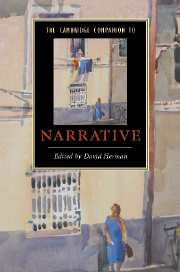4 - Time and space
from Part II - Studying narrative fiction: a starter-kit
Published online by Cambridge University Press: 28 September 2007
Summary
Temporal and spatial relationships are essential to our understanding of narratives and go beyond the specification of a date and a location. Flaubert's Madame Bovary, the illustrative narrative that I shall focus on in this chapter, is set in the mid nineteenth century in Normandy, France. While this information concerning the when and where of the novel is important to our cultural understanding of the novel and to our response to Emma's actions and emotions, it is only part of a much wider network of temporal and spatial structures. Narratives unfold in time, and the past, present, and future of a given event or action affect our interpretation of that action, while the characters who populate narrative texts move around, inhabit and experience different spaces and locations, allowing readers to construct complex worlds in their minds.
To read a narrative is to engage with an alternative world that has its own temporal and spatial structures. The rules that govern these structures may or may not resemble those of the readers' world. And while readers do not, on the whole, try to map out hierarchical relations between world levels in the way narratologists do, they nevertheless have a sense that narratives can be divided into different temporal and spatial zones.
- Type
- Chapter
- Information
- The Cambridge Companion to Narrative , pp. 52 - 65Publisher: Cambridge University PressPrint publication year: 2007
- 34
- Cited by

